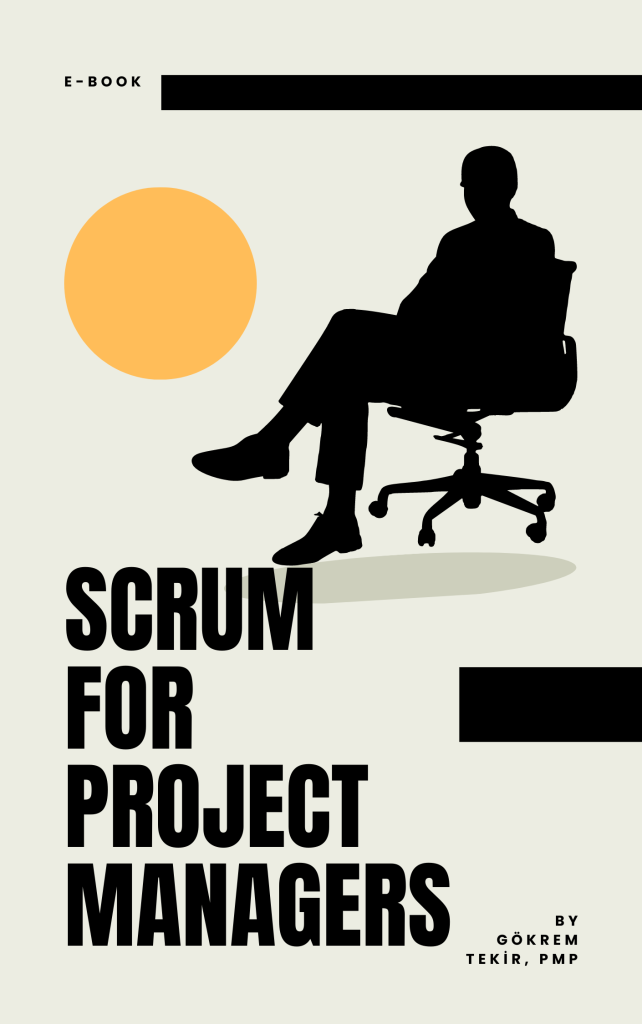
Are you tired of managing projects that seem to drag on forever? Do you feel like you’re constantly putting out fires instead of making real progress? It’s time to try a new approach.
Introducing Scrum for Project Managers, the e-book that will revolutionize the way you approach project management. Our comprehensive guide will teach you everything you need to know about Scrum, an agile project management framework that has been proven to increase productivity, improve communication, and deliver results.
In this e-book, you’ll learn the basics of Scrum, including how to create and manage a product backlog, how to conduct sprint planning and review meetings, and how to effectively communicate with your team. You’ll also discover advanced techniques for improving team collaboration, managing stakeholder expectations, and delivering high-quality products on time and within budget.
Whether you’re a seasoned project manager or just starting out, Scrum for Project Managers is the must-have resource for anyone looking to improve their project management skills. And with our easy-to-read format and practical advice, you’ll be able to start implementing Scrum in your projects right away.
Chapter 1- Scrum Approach
- The Agile Manifesto and the Birth of Scrum. 10
- Overview of Scrum Framework 12
- Scrum Artifacts 14
- Organizational Goals in Scrum 16
- What is the Backlog? 19
Chapter 2 – Product Backlog
- Product Backlog in Scrum 23
- An Example of Scrum Practice 25
- User Stories 27
- Refining and Estimating Product Backlog 30
Chapter 3 – Sprint Backlog
- Sprint Backlog 35
- Sprint Scope and Sprint Goal 37
Chapter 4 – Definition of Done
- Increment and Definition of Done 42
- More Details of “Definition of Done” 45
- When should the DoD be Prepared? 48
- Definition of Done vs. Acceptance Criteria 50
Chapter 5- Scrum Events
- What are Scrum Events? 53
- What is a Time Box? 55
- More Details About The Sprint 57
- Sprint Planning Event 59
- Why is the Sprint Valuable? 61
- What can be Done in the Sprint? 63
- How will Things Be Done in the Sprint? 66
- Who Attends the Sprint Planning Meeting? 68
- Coherency of Sprint Backlog Items 70
- Daily Scrum 72
- Sprint Review Meeting 74
- Sprint Retrospective Meeting 76
- Understanding Epics 80
- Special Sprints 83
- Canceling a Sprint 85
Chapter 6 – The Scrum Team
- Scrum Team 88
- Scrum Team Size 90
- Product Owner 92
- What is Value 94
- How is the Product Backlog Ordered? 96
- The Developers 98
- The Scrum Master 100
- How does the Scrum Master serve to the Scrum Team 102
- What is an Impediment in Scrum? 104
- How does the Scrum Master serve to the Product Owner? 106
- How does the Scrum Master serve to the Organization 108
- Other Titles in Scrum 110
Chapter 7 – Scaling Scrum
- Introduction To Scaling Scrum 115
- What happens when multiple Scrum Teams work on the same Product? 117
- Impact on velocity when scaling Scrum 118
- Integrated Product Increments 120
- The Definition of Done when multiple teams work on the same Product 122
- Must the Sprints be aligned? (same length, same start/end) 124
- How many Product Owners are there? 126
- Feature teams vs Component teams 128
- The importance of creating an integrated Increment 130
Chapter 8 – Terms and Tools Used in Scrum
- The Velocity of the Scrum Team 134
- Technical debt 136
- Functional and non-functional requirements 138
- The process of emergence in Scrum 140
- Burn-down charts 142
- Burn-up charts 144
- The “cone of uncertainty” 146
Chapter 9 – Agile Framework and Practices
- Agile Framework Overview 150
- Kanban 152
- Extreme Programming (XP) 155
- Test-driven development (TDD) 157
- Behavior-driven development (BDD) 159
- DevOps 161
Chapter 10 – FAQ about Scrum
- Is Documentation Mandatory in Scrum? 165
- What happens with incomplete Sprint Backlog items? 167
- Who creates the Definition of Done? 168
- How to change scope without affecting the Sprint Goal? 170
- What happens if there is no Increment and/or the Sprint Goal is not reached? 171
- The difference between Product Backlog Refinement and Sprint Planning 173
- What is the difference between creating an Increment and Releasing it? 175
About The Author
Gökrem Tekir graduated from Anadolu University in 1997 as an Industrial Engineer.
He worked as a project engineer in different companies in the production and service sector. He earned the PMP Certificate in 2004.
After receiving the PMP Certificate, he continued his career as a Project Management Trainer and Consultant.
Among the trainings he gave, there are topics such as Fundamentals of Project Management, Agile Project Management, Scrum Approach, Project Planning and Follow-up with Microsoft Project, PMP Exam Preparation.
The consultancy services offered by Gökrem Tekir are the Establishment and Integration of Project Management Offices, Microsoft Project Server and Sharepoint Integration, Development of Enterprise-Specific Project Management Methods, Planning and Reporting of Projects Between Buyer and Sellers, Creation and Follow-up of Project Plans of Institutions, Projects of Employees. It is listed as Adapting to Management Methods.
Gökrem Tekir is the author of the first Turkish-language Project Management book in 2006. In 2017, a much more comprehensive work titled “Our Life is the Project – Project Manager’s Handbook” was also published.
Gökrem Tekir continues to share information on social networks such as Youtube, Linkedin, Twitter and Instagram in order to spread his knowledge on project management.
https://buy.stripe.com/6oE4jv5Fo8K7fNC5kx
- Download link will be active after payment site.
- When the new version is published, it will be sent to the email of the buyer.